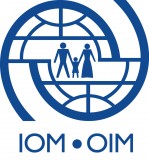Migrants get photography therapy
The International Organization
for Migration continues to seek new and innovative ways to carry out its tasks.
Some of the methods it’s used for
one of those tasks, advocacy against irregular migration, include poetry, an
art exhibition and just this month, photography.
“Photography is a universal
language which can help express feelings and convey emotions without using
words,” said Reza Deghati, internationally acclaimed news photographer who
began his celebrated career 40 years ago after he left his native Iran.
And with his succinct description
of photography in mind, the IOM got him to share his expertise and enthusiasm
with migrants returning to their African homeland after hard journeys abroad.
“Photography allows returnees to
gain self-confidence and rediscover themselves,” he explained. “Learning how to
take a good picture of their daily lives helps them value their life and show
us their side of their own story.”
During the dates 6-8 December, he
worked at an IOM-organized three-day photography training in Abidjan, Côte
d’Ivoire. Six young photographers participated in the training.
After learning the technical
aspects of photography, the participants trained their newly acquired skills on
by visiting reintegration and recreational activities organized by IOM for
returned migrants and community members. For instance, they attended a street
art painting performed by returned migrants on the walls of a school
rehabilitated by other returnees.
The aim of this pilot project was
to offer returned migrants an opportunity to become visual storytellers of
their daily life back home and help local journalists change the narrative on
migration in the country.
“I couldn't finish the first
level of high school last year because I left for Algeria,” said 17-year-old
Laciné who now is back at school as part of the reintegration assistance he
received from IOM after returning to Côte d’Ivoire.
“For me, this training is a new
start as it can help me show others what I have experienced and what I am
experiencing without using words,” he added.
The training will be followed by
a three-month coaching by IOM photographer Mohamed Diabaté, and the photographs
taken by the participants will be exhibited in spring 2020.
“Learning photography means learning
to look at the world in a different way,” Diabaté said. The IOM Côte d’Ivoire
photographer and filmmaker added: “It also gives a new dimension to the
returnees’ daily lives and it shows a reality that someone else cannot grasp.
It enables us to see through their eyes.”
This training is the first of a
series that will be organized by IOM across West Africa in 2020. It was
organized in the frame of an EU-IOM Joint Initiative for Migrant Protection and
Reintegration in the Sahel and Lake Chad regions.
One participant, reporter
Benjamin B., explained what he gained from the sessions with Reza Deghati this
way: “As a journalist, I have a pen, and I can write. Words can explain
reality. But the pictures will show it. If I have both skills, I can better
write about migration.”




Comments
Post a Comment